#Bee mimics
Photo
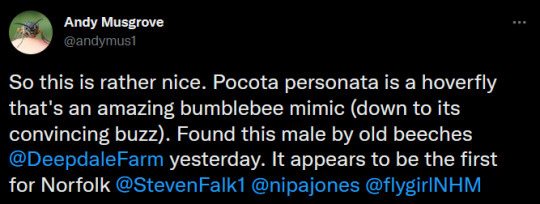


[tweet]
6 notes
·
View notes
Text
BEES IN AN IRISH GARDEN
BEES IN AN IRISH GARDEN
I have been trying to make a photographic record of the bees in my garden recently. We all know how important these creatures are, and in recent years there has been even more awareness of the important role they play. Now, much as I know of their importance, I really have very little knowledge of them. I am very much a learner, and I eagerly invite any comments, corrections and information that…
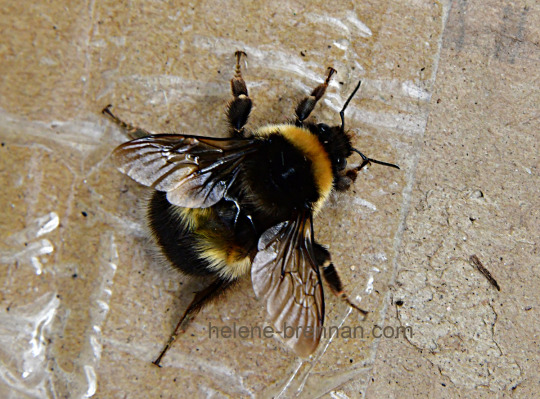
View On WordPress
3 notes
·
View notes
Photo



Bee mimic assassin bug, Notocyrtus sp., Reduviidae
Photographed in Ecuador by Andreas Kay
#animals#curators on tumblr#insects#bugs#true bugs#assassin bug#bee mimic assassin bug#mimicry#one nice bug
987 notes
·
View notes
Photo
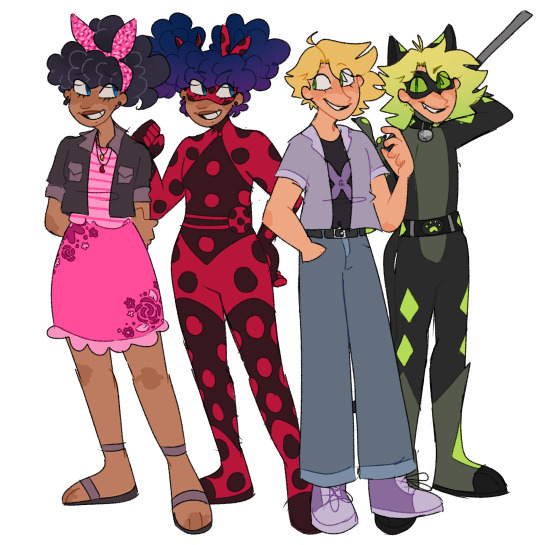

Reworked some of my redesigns, forgor to post them when I made them so here they are now :3
#art#miraculous ladybug#ml rewrite#marinette dupain cheng#adrien agreste#cat noir#Nino lahiffe#carapace#alya cesaire#rena rouge#chloe bourgeois#queen bee ml#these are so much better than my older ones lol#ESPECIALLY Rena I hate my old Rena rouge design#I tried to have queen bee’s costume kinda mimic ladybug’s#since Chloe is a big fan of ladybug n all that#miraculous redesign
2K notes
·
View notes
Text

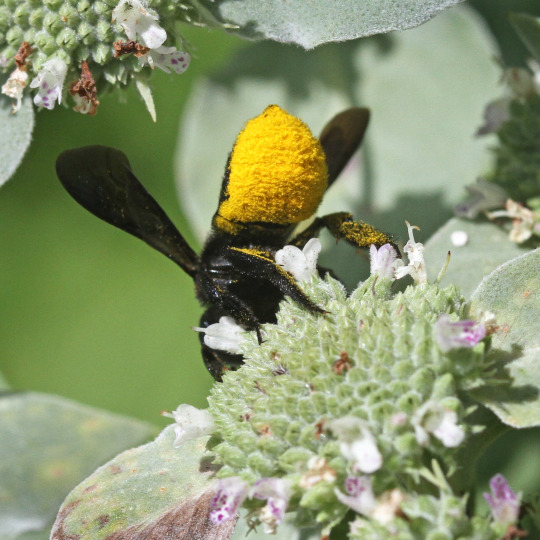


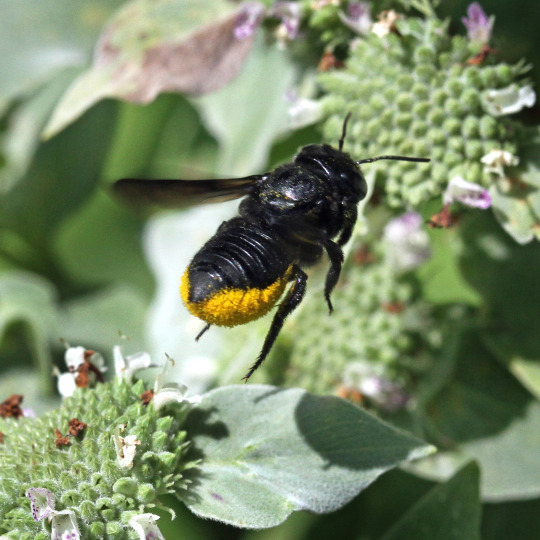
So. Much. Pollen.
Carpenter-mimic Leafcutter Bee (Megachile xylocopoides)
August 16, 2023
Southeastern Pennsylvania
#Megachilid Monday#bee#bees#photographers on tumblr#Carpenter-mimic Leafcutter Bee#bugs#bug#bugblr#entomology#insects#insect#hymenoptera#animals#nature#Megachilid
884 notes
·
View notes
Text
Moths in Disguise: these are all just harmless moths that have developed the ability to mimic wasps, bees, and/or hornets

Top Row (left to right): Eusphecia pimplaeformis and Myrmecopsis polistes; Bottom Row: Pennisetia marginatum
Moths are exceptionally skilled when it comes to mimicry, and there are hundreds of moth species that rely on that tactic as a way to protect themselves from predators. Their disguises are numerous and varied, but hymenopteran mimicry is particularly common, especially among the moths that belong to subfamily Sesiidae and family Arctiinae.

Yellowjacket-Mimicking Moths: Pseudosphex sp. (top and bottom left) and Myrmecopsis polistes (bottom right)
Some of their disguises involve more than just a physical resemblance -- there are some moths that also engage in behavioral and/or acoustic mimicry, meaning that they can imitate the specific sounds and behaviors of their hymenopteran models. In some cases, these moths are so convincing that they can even fool the actual wasps/bees that they are mimicking.
Such a detailed and intricate disguise is unusual even among mimics, and researchers believe that it developed partly as a way to trick the wasps into treating the mimic like one of their own. Wasps tend to prey upon moths (and many other insects), but they are innately non-aggressive toward their own nest-mates, which are identified by sight -- so if the moth can convincingly impersonate its model, then it can avoid being eaten by predatory wasps.
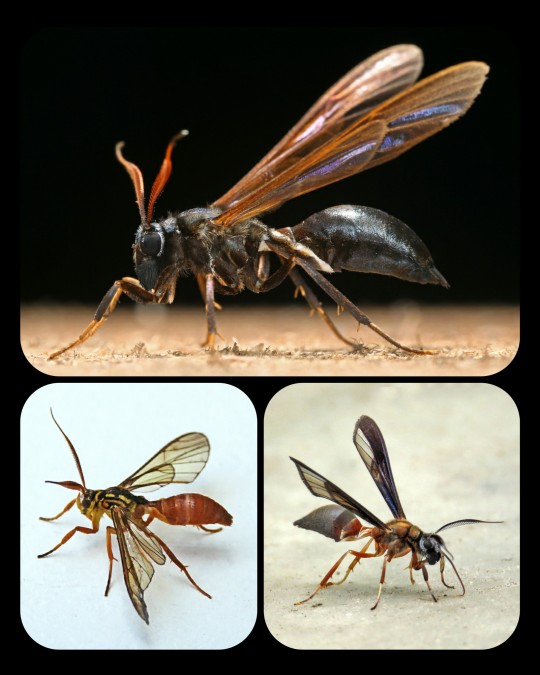
Wasp-Mimicking Moths: Pseudosphex ichneumonea (top), Myrmecopsis sp. (bottom left), and Pseudosphex sp. (bottom right)
There are many moths that can also mimic hornets, bumblebees, and carpenter bees.
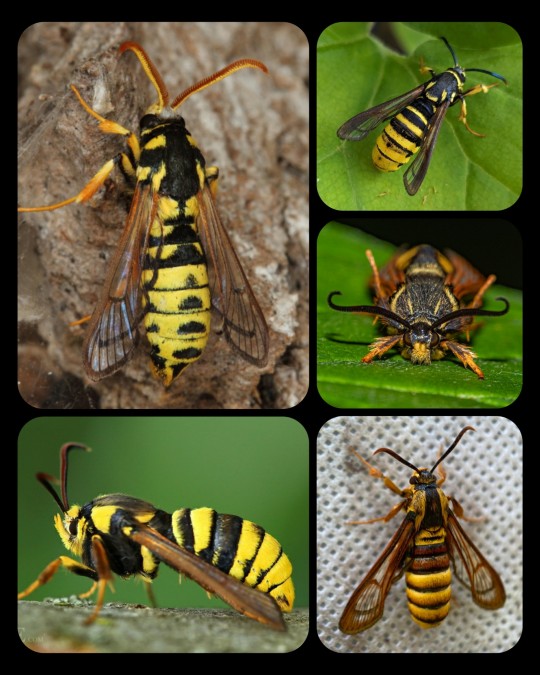
Hornet-Mimicking Moths: Eusphecia pimplaeformis (top left), Sesia apiformis (bottom left), Paranthrene simulans (top right), Pennisetia marginatum (middle right), and Sphecodoptera scribai (bottom left)

Bumblebee-Mimicking Moths: Hemaris tityus (top and bottom left) and Hemaris affinis (bottom right)
Moths are some of the most talented mimics in the natural world, as illustrated by their mastery of hymenopteran mimicry. But it's not just bees, hornets, and wasps -- there are many other forms of mimicry that can be found among moths, and the resemblance is often staggering.
Moths deserve far more credit than they receive, to be honest, because they are so incredibly interesting/diverse.
Sources & More Info:
Journal of Ecology and Evolution: A Hypothesis to Explain the Accuracy of Wasp Resemblances
Frontiers in Zoology: Southeast Asian clearwing moths buzz like their model bees
Royal Society Publishing: Moving like a model: mimicry of hymenopteran flight trajectories by clearwing moths of Southeast Asian rainforests
#lepidoptera#moths#Sesiidae#entomology#insects#animals#cool bugs#mimicry#nature#evolution#Arctiinae#bees#hymenoptera#hymenopteran mimic#wasp#bumblebee#acoustic mimicry#evolutionary arms race#I spend way too much time#reading about moths
108 notes
·
View notes
Text
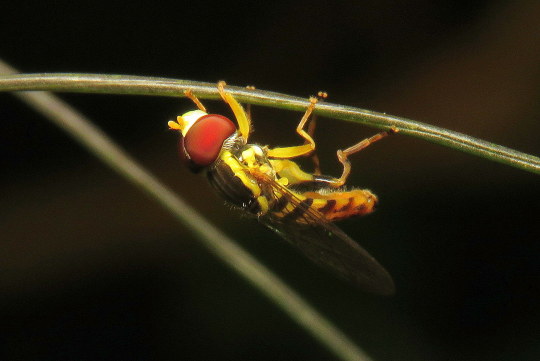
Bug of the Day
A wee hoverfly (Toxomerus geminatus) resting on a blade of fennel.
#hoverfly#Eastern calligrapher#bee mimic#fly#Toxomerus geminatus#Toxomerus#Syrphidae#Diptera#insect#that's not a bee!#bug of the day#BotD
210 notes
·
View notes
Text

#insect#hoverfly#flower#bee mimic#photographers on tumblr#textless#amadee ricketts#arizona#macro#orange#marigold#fall#autumn#in the yard#garden#november
58 notes
·
View notes
Text

Day 7: Common Banded Hoverfly
My favourite little guys! They mimic bees and are very good at it
67 notes
·
View notes
Text
So while I think maybe Gortash wouldn't exactly have a natural garden (at least one he's actually enthused about keeping/is interested in himself, I think he'd have one in the sense of being able to say he does-- Like "I'm Balduran nobility, of course I have people tending to a garden." re: keeping up appearances) I DO think he'd instead have a "garden" made of metal and the like, somewhere. Why spend so much time, so much hard work on something that can be so easily ruined by weather out of one's control? Something that will wilt, that you cannot truly control and might not even fit your vision? It needs so much time to just keep things orderly, time which he doesn't really have to be spending on hobbies. So, over the course of many years, an hour spent here cutting and molding petals, an hour there making vines, eventually a picturesque work of art manifests.
A small field of delicately and intricately made metal flowers, thin and sharp blades of silvery grass, and like some sort of fucked up bonsai project the centerpiece of the garden would be a massive work-in-progress tree with twisted together metal to mimic the look of bark. You don't have to obsess over a disease plaguing plants, insects marring once-perfect leaves or other maintenance of the like, because everything is perfectly in place as it should be. Anything that changes in the garden is because Gortash made it so, it's like playing God on a budget. It's perfect for this control freak. He makes it thrive. He's solely responsible for all this beauty.
#enver gortash#headcanon#bg3#this is just me rambling#or.. he'd have succulents. lol#succulents love to be forgotten about and thrive in such conditions#dont get me started on a psychological(?) analysis of this hc. i could go deeper i think#he doesnt get the point of (fragile) beauty.. what is a garden. really. with the absence of buzzing bees? birds and nighttime moths?#its beautiful. but quiet and lonely in a way a garden isnt meant to be. at the end of the day a perfect mimic is still a mimic#i gotta stawp myself here
14 notes
·
View notes
Text
GARDEN WANDERINGS
Here are some more photos from my garden. They are fairly random, depending on what shows itself to me as I wander about with my camera.
Butterflies always attract my attention; they’re a very attractive subject to capture, although they can be rather shy.
This peacock would either pose with its wings closed or upside down – if it doesn’t fly away! Patience is needed. Often, when I’m in the…
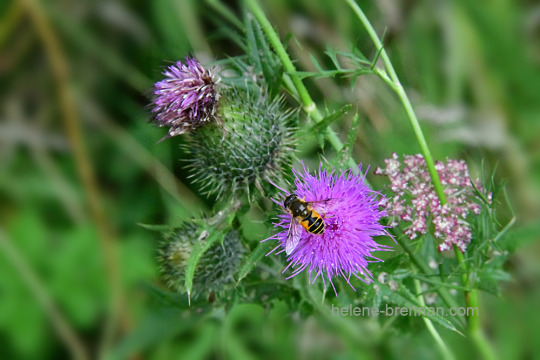
View On WordPress
1 note
·
View note
Photo
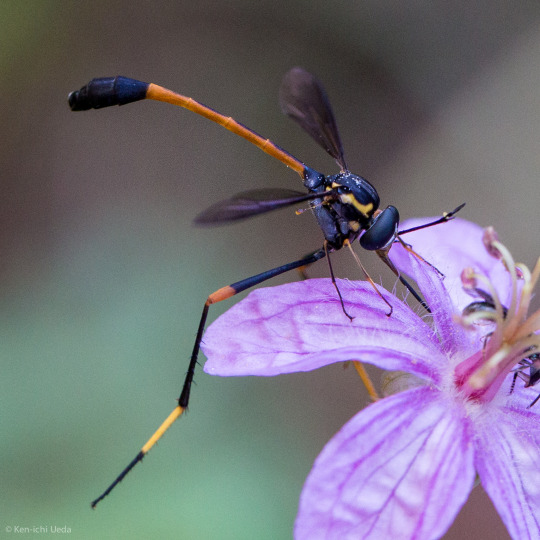
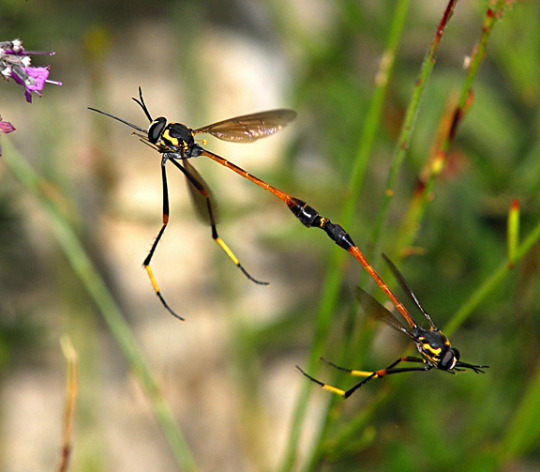
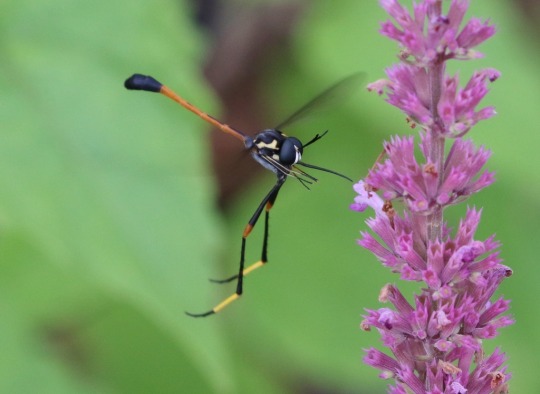
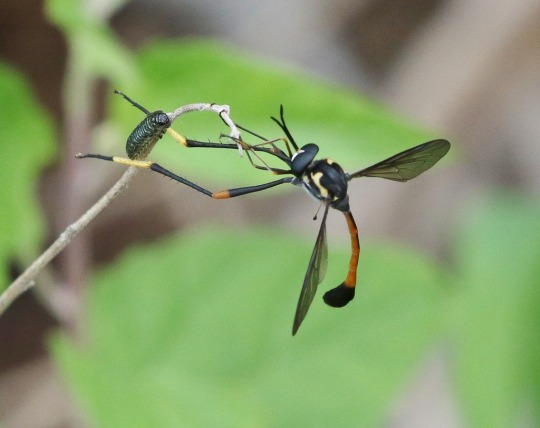

Wasp-mimic bee fly, Systropus arizonicus, Bombyliidae
Found in the southwestern United States and into Mexico
Photo 1 by kueda, 2 by rbehrstock, 3-4 by silversea_starsong, and 5 (for scale) by sambiology
#animals#insects#bugs#curators on tumblr#fly#diptera#bee fly#wasp mimic bee fly#mimicry#one nice bug
701 notes
·
View notes
Text
I just found out there is a bee moth.
Give me like 45 minutes to one hour and I will write about this creature. Because
Its
So cute
And cool
And I love it
So so so much
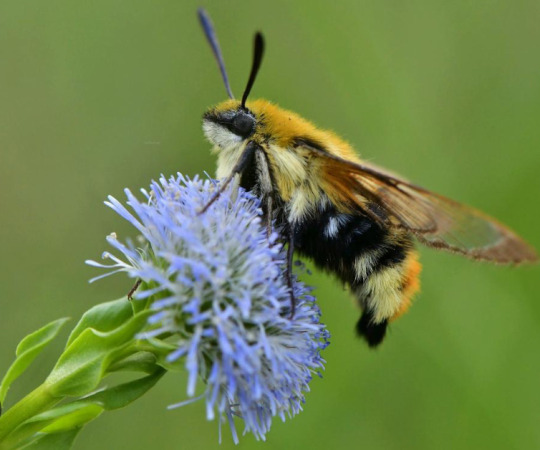

Just
Look at this
Btw, it can come to my country. Yea, I’m going to be outside a lot when it comes back here
#Bee moth#bee mimic#yea#give me some time#sadly I can’t research it rn#Because#yay#school#but I will#moths
51 notes
·
View notes
Text
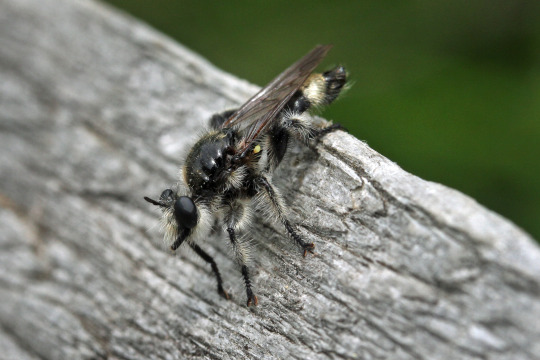

Laphria cinerea, a bee-mimic robber fly
April 27, 2023
York River State Park, Williamsburg, Virginia
#bug#bugs#photographers on tumblr#Laphria cinerea#bee mimic robber fly#insect#insects#bugblr#entomology#nature#animals#diptera
464 notes
·
View notes
Text
The Oriental Blue Clearwing Moth: these moths were regarded as a "lost species" for more than 130 years, until they were finally sighted again in 2013
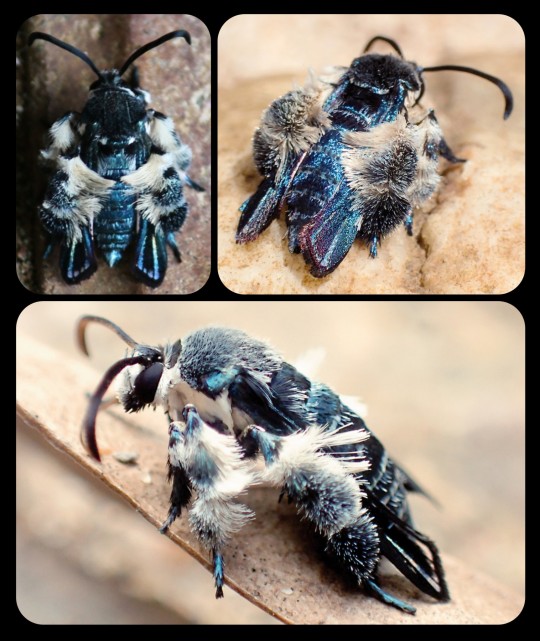
For more than 130 years, the Oriental blue clearwing moth (Heterosphecia tawonoides) was known only from a single, badly damaged specimen that was collected in Sumatra in 1887. There were no recorded sightings of this species again until 2013, when entomologist Dr. Marta Skowron Volponi unexpectedly found the moths feeding on salt deposits that had accumulated along the riverbanks in Malaysia's lowland rainforest.

These moths were observed by researchers again in 2016 and 2017, and research indicates that the moths are actually bee-mimics, as they mimic the appearance, sound, behavior, and flight patterns of local bees. Their fuzzy, bright blue appearance might seem a little out of place for a bee-mimic, but those features do appear in several different bee species throughout Southeast Asia.
When the moths are in flight, they bear a particularly strong resemblance to the bees of the genus Thyreus (i.e. cuckoo bees, otherwise known as cloak-and-dagger bees), several of which are also bright blue, with banded markings, dark blue wings, fuzzy legs, and smooth, rounded antennae. The physical resemblance is compounded by the acoustic and behavioral mimicry that occurs when the moths are in flight.
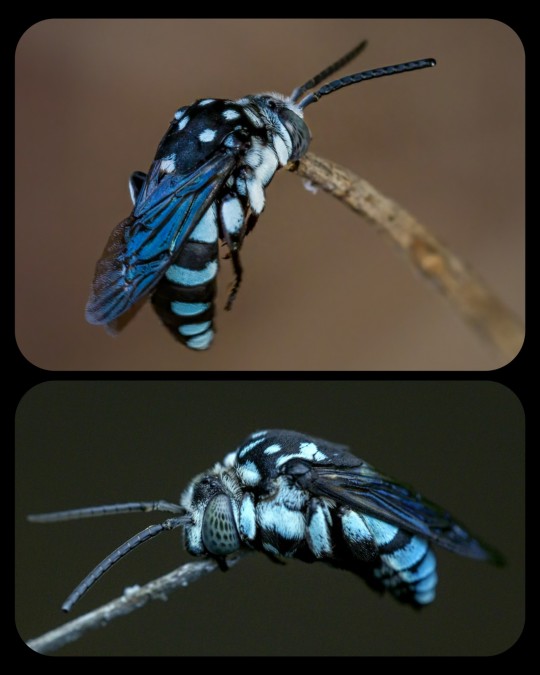
Cloak-and-Dagger Bees: the image at the top shows an Indo-Malayan cloak-and-dagger bee (Thyreus novaehollandiae) in a sleeping position, holding itself upright with its mandibles clamped onto a twig, while the image at the bottom shows a Himalayan cloak-and-dagger bee (T. himalayensis) resting in the same position
The moths also engage in "mud-puddling" among the various bees that congregate along the riverbanks; mud-puddling is the process whereby an insect (usually a bee or a butterfly) draws nutrients from the fluids found in puddles, wet sand, decaying plant matter, carrion, animal waste, sweat, tears, and/or blood. According to researchers, the Oriental blue clearwing moth was the only lepidopteran that was seen mud-puddling among the local bees.
Dr. Skowron Volponi commented on the unusual appearance and behavior of these moths:
You think about moths and you envision a grey, hairy insect that is attracted to light. But this species is dramatically different—it is beautiful, shiny blue in sunlight and it comes out during the day; and it is a master of disguise, mimicking bees on multiple levels and even hanging out with them. The Oriental blue clearwing is just two centimeters in size, but there are so many fascinating things about them and so much more we hope to learn.
This species is still incredibly vulnerable, as it faces threats like deforestation, pollution, and climate change. The president of Global Wildlife Conservation, which is an organization that seeks to rediscover "lost species," added:
After learning about this incredible rediscovery, we hope that tourists visiting Taman Negara National Park and picnicking on the riverbanks—the home of these beautiful clearwing moths—will remember to tread lightly and to take their trash out of the park with them. We also recommend that Americans learn about palm oil production, which is one of the primary causes of deforestation in Malaysia.
Sources & More Info:
Phys.org: Bee-Mimicking Clearwing Moth Buzzes Back to Life After 130 Years
Mongabay News: Moth Rediscovered in Malaysia Mimics Appearance and Behavior of Bees to Escape Predators
Journal of Tropical Conservation Science: Lost Species of Bee-Mimicking Clearwing Moth, H. tawonoides, Rediscovered in Peninsular Malaysia's Primary Rainforest
Frontiers in Zoology: Southeast Asian Clearwing Moths Buzz like their Model Bees
Royal Society Publishing: Moving like a Model - mimicry of hymenopteran flight trajectories by clearwing moths of Southeast Asian rainforests
Medium: Rediscovery in a Glint of Blue
re:wild.org: The "Search for Lost Species" Project
#lepidoptera#moths#heterosphecia tawonoides#oriental blue clearwing moth#entomology#insects#cute bugs#nature#animals#lost species#mimicry#evolution#bees#southeast asia#Malaysia#colorful moths#bee mimic#science
79 notes
·
View notes
Text



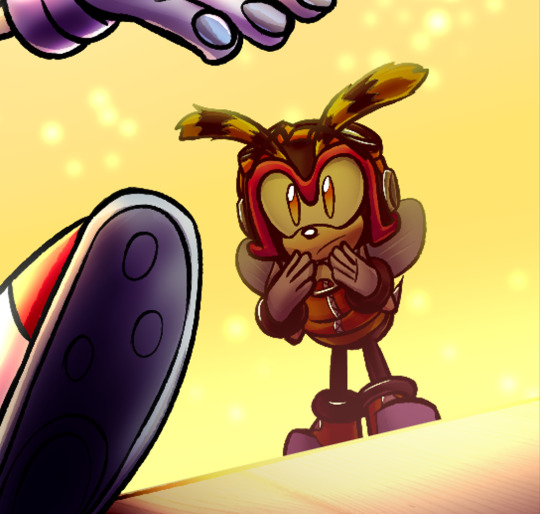

*fighting with law quality* 👊👊👊👊👊
Cover for my fanfic ^^
#brinicle au#sth au#sonic fanart#sth fanart#sonic the hedgehog fanart#sth#sonic idw#idw sonic#art#fanart#fake cover#comic covers#fan cover#sonic the hedgehog#mimic the octopus#espio the chameleon#vector the crocodile#charmy bee#charmy the bee#chaotix detective agency#team chaotix#sonic fandom#sonic comics#sonic heroes#sonic art
52 notes
·
View notes